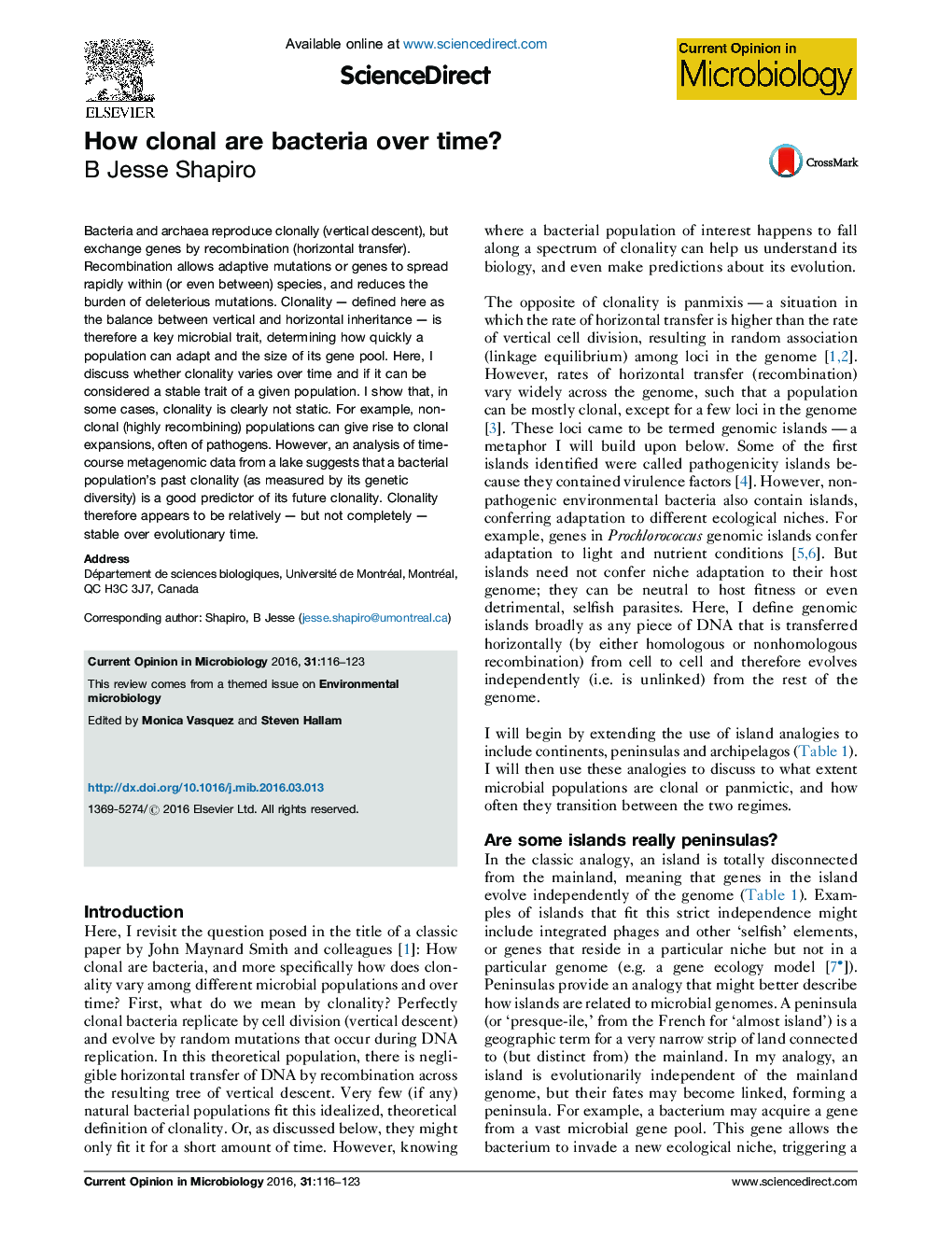| کد مقاله | کد نشریه | سال انتشار | مقاله انگلیسی | نسخه تمام متن |
|---|---|---|---|---|
| 6131533 | 1593038 | 2016 | 8 صفحه PDF | دانلود رایگان |
عنوان انگلیسی مقاله ISI
How clonal are bacteria over time?
ترجمه فارسی عنوان
چطور کلونال باکتری در طول زمان است؟
دانلود مقاله + سفارش ترجمه
دانلود مقاله ISI انگلیسی
رایگان برای ایرانیان
موضوعات مرتبط
علوم زیستی و بیوفناوری
ایمنی شناسی و میکروب شناسی
میکروب شناسی
چکیده انگلیسی
Bacteria and archaea reproduce clonally (vertical descent), but exchange genes by recombination (horizontal transfer). Recombination allows adaptive mutations or genes to spread rapidly within (or even between) species, and reduces the burden of deleterious mutations. Clonality - defined here as the balance between vertical and horizontal inheritance - is therefore a key microbial trait, determining how quickly a population can adapt and the size of its gene pool. Here, I discuss whether clonality varies over time and if it can be considered a stable trait of a given population. I show that, in some cases, clonality is clearly not static. For example, non-clonal (highly recombining) populations can give rise to clonal expansions, often of pathogens. However, an analysis of time-course metagenomic data from a lake suggests that a bacterial population's past clonality (as measured by its genetic diversity) is a good predictor of its future clonality. Clonality therefore appears to be relatively - but not completely - stable over evolutionary time.
ناشر
Database: Elsevier - ScienceDirect (ساینس دایرکت)
Journal: Current Opinion in Microbiology - Volume 31, June 2016, Pages 116-123
Journal: Current Opinion in Microbiology - Volume 31, June 2016, Pages 116-123
نویسندگان
B Jesse Shapiro,
